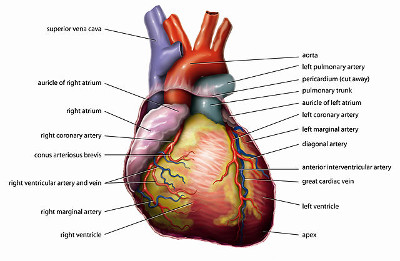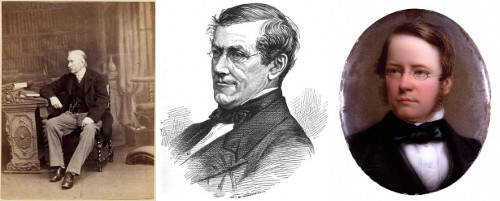
Here are eight new lateral thinking puzzles that you can try on your friends and family over the holidays — see who can make sense of these odd scenarios using only yes-or-no questions.

Here are eight new lateral thinking puzzles that you can try on your friends and family over the holidays — see who can make sense of these odd scenarios using only yes-or-no questions.

When we say that the function of the heart is to pump the blood, what do we mean, exactly? Typically an object’s function is something that confers some good or contributes to some goal: In pumping blood my heart keeps me alive; in grasping objects my hands help me manipulate my environment.
But is that right? Suppose someone designs a sewing machine with a self-destruct button. Pressing the button will never have good consequences for anyone, and no one will ever set a goal that’s furthered by blowing up the machine. Still, it seems correct to say that the button’s function is to destroy the machine.
Another example, from Johns Hopkins philosopher Peter Achinstein: “Suppose that a magnificent chair was designed as a throne for the king, i.e., it was designed to seat the king. However, it is actually used by the king’s guards to block a doorway in the palace. Finally, suppose that although the guards attempt to block the doorway by means of that chair they are unsuccessful. The chair is so beautiful that it draws crowds to the palace to view it, and people walk through the doorway all around the chair to gaze at it. But its drawing such crowds does have the beneficial effect of inducing more financial contributions for the upkeep of the palace, although this was not something intended. What is the function of this chair?”
(Peter Achinstein, “Function Statements,” Philosophy of Science, September 1977.)
The following remarkable coincidence will be read with interest: Sometime since it was announced that a man at Titusville, Pennsylvania, committed suicide for the strange reason that he had discovered that he was his own grandfather. Leaving a dying statement explaining this singular circumstance, we will not attempt to unravel it, but give his own explanation of the mixed-up condition of his kinsfolk in his own words. He says, ‘I married a widow who had a grown-up daughter. My father visited our house very often, fell in love with my stepdaughter, and married her. So my father became my son-in law, and my step-daughter my mother, because she was my father’s wife. Some time afterwards, my wife gave birth to a son; he was my father’s brother-in-law, and my uncle, for he was the brother of my step-mother. My father’s wife — i.e. my step-daughter — had also a son; he was, of course, my brother, and in the mean time my grandchild, for he was the son of my daughter. My wife was my grandmother, because she was my mother’s mother. I was my wife’s husband and the grandchild at the same time. And as the husband of a person’s grandmother is his grandfather, I was my own grandfather.’ After this logical conclusion, we are not surprised that the unfortunate man should have taken refuge in oblivion. It was the most married family and the worst mixed that we ever heard of. To unravel such an entangling alliance could not have resulted otherwise than in an aberration of mind and subsequent suicide.
— Littell’s Living Age, May 9, 1868
(Yes, I know about the song!) (Thanks, Dave.)

— Frederick W. Umminger Jr., Yale Record, 1959

Draw three circles, each of which intersects the other two at two points, and connect these points of intersection as shown.
Now, neatly, ace/bdf = 1.
Discovered by University of Waterloo mathematician Hiroshi Haruki.
A bit more on philosophy and time travel: It seems consistent to suppose that a time traveler can affect the past but not change it. Perhaps I will invent a time machine tomorrow and race heroically back to 1865 to save Lincoln from John Wilkes Booth. I might arrive at Ford’s Theater and race up to Lincoln’s box; I might even wrestle dramatically with Booth in the hallway. But we know in advance that I won’t be successful, because history tells us that Booth did shoot Lincoln that night.
This way of looking at it entails no paradoxes, but it does create a problem. If time travel is possible then presumably hundreds of well-intentioned time travelers converged on Lincoln’s box that night, all determined to save the president and all somehow slipping on banana peels at the wrong moment. This is not impossible, but it seems terrifically unlikely — so much so that the very fact of Lincoln’s death seems to imply that time travel is not possible.
But University of Sydney philosopher Nicholas J.J. Smith points out that we don’t quite know this: A time machine may be invented a century from now with a backward range of only 50 years. In that case we have no experience from which to judge these matters. “One cannot conclude from the supposition that local backward time travel would bring with it what we ordinarily regard as improbable coincidences, that such time travel will occur only rarely: for the only reason we regard the events in question as improbable coincidences is that within our experience, they have not occurred very often — and our experience does not (apparently) encompass backward time travel.”
(Nicholas J.J. Smith, “Bananas Enough for Time Travel?”, The British Journal for the Philosophy of Science, September 1997.)
From a 1951 issue of The Dark Horse, the staff magazine of Lloyds Bank, a bitter mnemonic for pi:
Now I live a drear existence in ragged suits
And cruel taxation suffering.
3.141592653589
Also, a curiosity:
(3,1,4) = (1,5,9) + (2,6,5) (mod 10)
(Thanks, Trevor.)
“There is nothing so easily made offensive as good reasoning.” — Sir Arthur Helps

The Wheatstone bridge circuit was invented by Samuel Hunter Christie but named after Charles Wheatstone, who developed the Playfair cipher … which was named after Lyon Playfair.
See Who’s On First?
advolution
n. a rolling toward
“The ball was my idea,” said Steven Spielberg of the boulder that threatens Indiana Jones at the start of Raiders of the Lost Ark. “I don’t even know where I came up with it — it might have been deeply in my subconscious from something I saw when I was a kid — but I just said, ‘You know, at some point some huge boulder should start chasing Indy, and it almost squashes him three or four times until he gets out of the cave.'”
The scene was shot 10 times, with the crew replacing fallen stalactites each time. “I didn’t know it was gonna look as good as it did until the day [production designer] Norman Reynolds showed me that he had actually made a boulder that was something like 22 feet in circumference,” Spielberg said. “So I didn’t have Harrison step in the shot until I was completely convinced it was safe. Once we’d rehearsed it several times with a stuntman, Harrison did every shot himself.”
When Spielberg, George Lucas, and screenwriter Lawrence Kasdan had met in January 1978 to brainstorm ideas, it was quickly clear that Lucas already had an articulate vision of the story. At one point Kasdan asked Lucas why he didn’t direct the film himself. He said, “Because then I’d never get to see it.”
(From J.W. Rinzler, The Complete Making of Indiana Jones, 2008.)